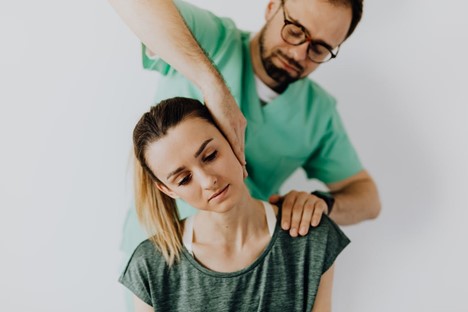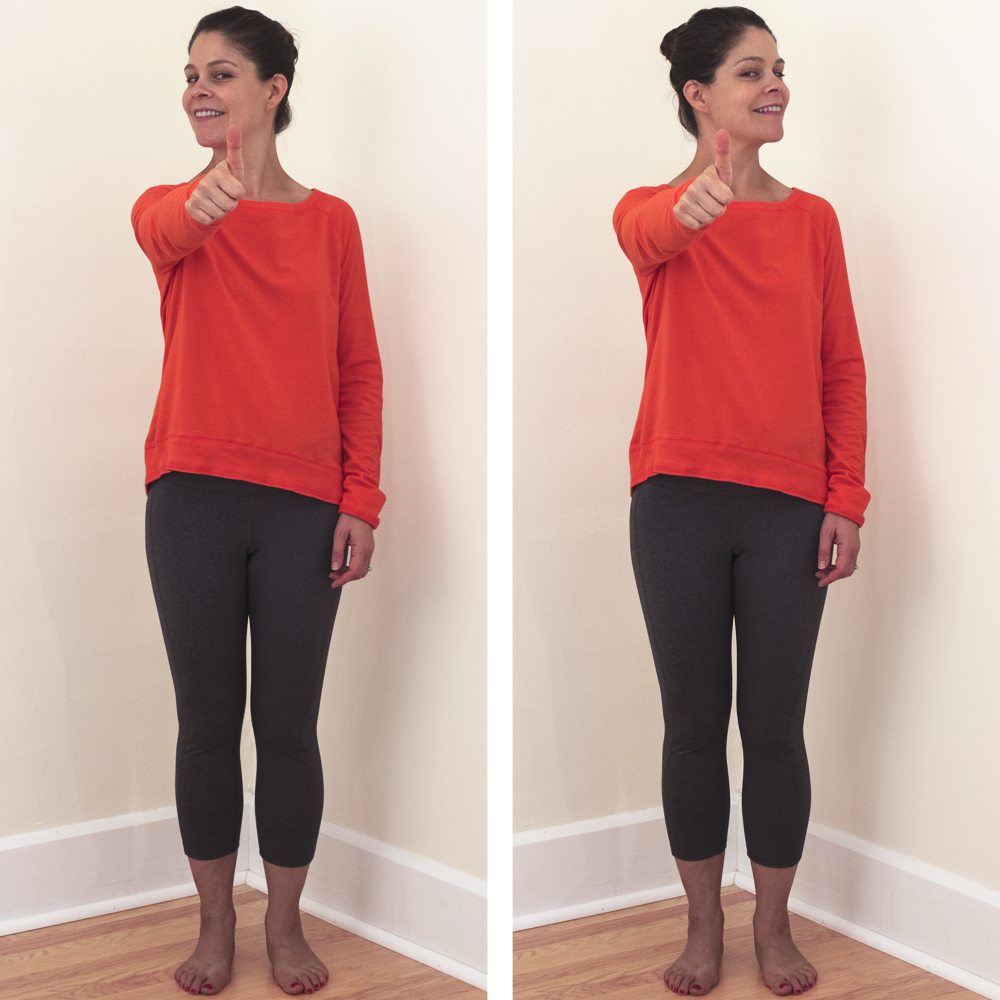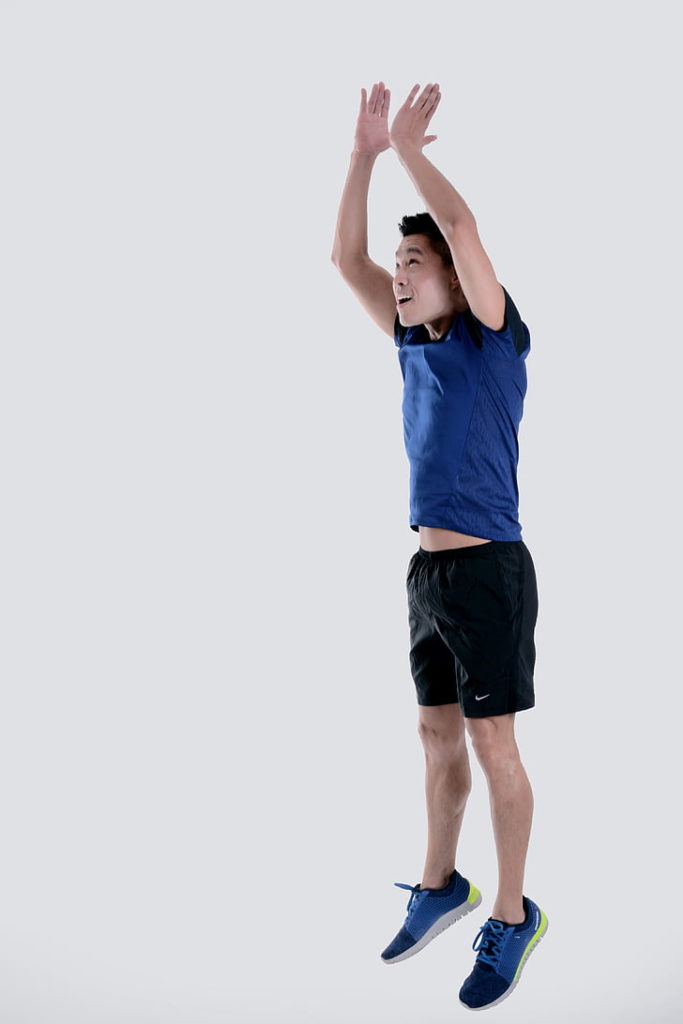Physical Therapy Exercises for Concussions
Before discussing physical therapy exercises for concussions, let’s shed some light on how this traumatic brain injury can affect your life.
Did you know that 1.6 to 3.8 million people in the U.S. experience concussions during sports or other recreational activities in a year?
A concussion can cause lasting effects on the brain tissue and mess with its chemical balance. This injury may result in short and long-term physical, cognitive, and behavioral symptoms.
What is a Concussion?
A concussion occurs when the brain is rapidly shaken or the head sustains a direct hit. Such an event can cause unpredictable injury to any part of the brain. Consequently, the person who has incurred the injury may experience immediate or delayed changes in the brain’s chemistry and function.
You’d be glad to hear that less than 10% of concussions cause a loss of consciousness. Depending on the injured area of the brain, it may lead to temporary or permanent brain function problems.
Potential Causes of Concussions
Below are the most common causes of concussions.
- Neck or head injury while playing sports
- Falls
- Car accidents (head impact and whiplash)
- Work injuries (head trauma and falls)
- Playground accidents
- Other violent events, such as physical assaults, domestic violence, direct blow to the head, neck, or face, and being too close to an explosion or blast
Signs and Symptoms of Concussions
People usually experience some symptoms of concussions immediately while others may experience them after a few hours, days, months, or even years after the injury.
Immediate and short-term symptoms of concussions include:
- Dizziness
- Nausea or vomiting
- Headache
- Fatigue
- Poor coordination or balance
- Difficulty sleeping
- Increased sleepiness
- Slurred speech
- Increased sensitivity to light and sound
- Double or blurred vision
- Seizures
Below are the cognitive symptoms of concussions.
- Confusion
- Difficulty concentrating
- Decreased ability to think and make decisions
- Deteriorating memory (both short and long term)
- Decreased productivity
Emotional symptoms are as follows.
- Irritability
- Mood swings
- Anxiety
- Restlessness
- Depression
- Aggression
- Decreased tolerance to stress
- Personality change or change in behavior pattern
On the other hand, long-term symptoms of concussions include.
- Fatigue
- Muscle weakness
- Low blood pressure
- Chronic headaches
- Dizziness
- Weight gain
- Growth and development problems in children
- Loss of menstruation
- Loss of libido
- Muscle spasticity
- Early dementia or brain disorder
Some symptoms of concussions may take more time than usual to go away. In such a case, the affected person may need further diagnosis and treatment from healthcare providers, including a physical therapist.
What is the Recovery Process Like?
Post-concussion syndrome recovery can take anywhere from several weeks to months. Some patients may even take years to recover. Generally, this depends on a variety of factors, including the age of the person and the severity of their injury.
With that said, concussions often occur with other injuries, mainly those to the neck or surrounding tissues. In some cases, a concussion may lead to serious brain damage like bruising, tearing, or bleeding. Needless to say, this warrants immediate medical attention.
Warning: Concussions can cause permanent damage to your brain. If you suspect a head injury, you must seek emergency medical help from a licensed healthcare practitioner.

How is a Concussion Diagnosed?
The diagnosis of a concussion involves careful testing by a healthcare provider, such as an orthopedic surgeon, athletic trainer, or physical therapist. No single test or tool can diagnose this condition. Even hi-tech tests like MRI and CT scans can’t help because brain abnormality can’t be shown by these scans.
A physical therapist asks several questions to gain an in-depth understanding of your symptoms. They also perform different tests to identify the damage caused by a concussion. These tests may focus on assessing muscle strength, body coordination, memory, sight, smell, hearing, and balance.
Throughout the treatment procedure, the physical therapist will repeat the questions and tests to track your progress and determine when you can return to your normal routine. They will also examine your neck after a concussion to identify potential problems. Neck injuries increase headaches and dizziness.
If you’re an athlete, your physical therapist may work with a healthcare provider to assess neuropsychological testing results in order to determine if you have a concussion.
How Does a Physical Therapist Help a Concussion Patient?
For most adults, post-concussion syndrome recovery takes 10-14 days. Children, on the other hand, require approximately four weeks of recovery time. Seeing a physical therapist may help accelerate the recovery process.
These experts examine the neurological, cardiovascular, and orthopedic systems of the patient to develop the best possible routine that caters to their unique symptoms and needs.
Let’s see how concussion and physical therapy work.
Neck Rehabilitation
Different types of head trauma can lead to a concussion. More often than not, a head injury extends to the neck. The neck is likely to stiffen or tense before, during, and after a concussion, often resulting in chronic pain that may reach the shoulders. The injury may be serious if you suffer from severe headaches or head pain.
Physical therapists use various strategies and interventions to promote cervical and thoracic spine mobility and decrease pain and discomfort. A combination of manual physical therapy and progressive therapeutic exercises helps to improve neck function.
Balance and Coordination Rehabilitation
Physical therapists are vestibular rehabilitation experts dedicated to helping concussion patients who continue to feel off-balance and experience dizziness several days or weeks after injury. Common symptoms of compromised vestibular function include but are not limited to:
- Dizziness
- Visual impairment
- Vertigo
- Nausea
- Loss of coordination
Physical therapists conduct a thorough assessment of these patients and come up with a proper treatment featuring easy exercises to help revive normal vestibular function.

Eye Tracking and Early Vision Rehabilitation
It is not uncommon for concussion patients to struggle with their vision. Some people even face difficulty tracking objects. If a comprehensive examination does not indicate any cognitive warning signs that would require treatment from a neurologist, a physical therapist can help the patient recover as soon as possible.
They offer oculomotor exercises in a safe environment to support the patient as they navigate complex moving visual environments. Typically, exercises like pencil push-ups can help the eye adapt to the changes in visual depth.
Furthermore, physical therapists may also use visual targets to improve the eye’s ability to direct and hold attention without any head movements. In case the symptoms don’t subside after following a regular exercise routine, the physical therapist may refer the patient to a vision therapist or neuro-ophthalmologist.
Aerobic Exercise Program
Physical therapists who know the ins and outs of concussion literature often use graded exercise testing like the Buffalo Concussion Treadmill test. This test aims to determine the level of exertion safe for patients to exercise without worsening their symptoms. Research supports that this test can be used for diagnosing as well as in the recovery process in patients with mild concussions. It works particularly well for those with persistent symptoms.
The physical therapist uses the information collected during the treadmill test to create an individualized aerobic exercise program for the patient.
Autonomic Nervous System Rehabilitation
The autonomic nervous system is responsible for managing non-conscious bodily functions, such as breathing and blood pressure regulation. Autonomic dysfunction occurs when a concussion damages the parasympathetic nerves. Consequently, a patient may experience several side effects, including high blood pressure, dizziness, and excessive sweating.
If symptoms are too severe, the patient should take medicines to control their blood pressure and beta-blockers to manage irregular heartbeats. In case of low blood pressure, the following lifestyle changes may help.
- Elevating the bed’s head
- Increasing fluid consumption
- Adding salt to your diet
- Wearing compression stockings
If a patient experiences persistent autonomic dysfunction symptoms, the physical therapist may recommend an aerobic exercise program, which may comprise the following exercises.
- Walking/ jogging
- Treadmill exercise
- Lower and upper limb stretching
- Stair climbers
As per your therapist’s instructions, you should perform aerobic exercises for 30 to 60 minutes twice a thrice a week.
How Physical Therapists Reduce the Risk of Lower Extremity Injury after a Concussion
Concussion patients tend to have a higher risk of lower extremity injury, even after a year has passed since their accident. Working with a physical therapist may help reduce this risk significantly.
Studies involving high school athletes, college athletes, and soldiers show that these individuals are twice as likely to go through a lower extremity injury after a concussion.
Perhaps this happens because the human brain and the central nervous system are not integrated well with the peripheral nervous system. As a result, the affected person’s body coordination and balance is impaired. Orthopedic rehabilitation is generally recommended for athletes wanting to return to play, as it helps with neuromuscular control impairments.
Another study revealed that athletes who received customized physical therapy within 10 days after a concussion recover more quickly. Patients who performed physical therapy exercises for concussions in the early stages returned to play 10.5 days sooner. Their symptoms also lasted 3.5 days less than others.
How to Incorporate Physical Therapy into a Rehabilitation Program
The best way to go about this is by consulting with your concussion management team. You should discuss if physical therapy will be beneficial for you. If your primary care physician doesn’t know much about concussion and physical therapy, you can ask for a referral.
Before you choose a physical therapist, make sure they are qualified, trained, and experienced in concussion management. You may also opt for an outpatient rehabilitation facility with a team of physical therapists skilled at working with different levels of brain injuries.
If your concussion symptoms are persistent, you should go for a team approach. Other healthcare professionals may collaborate with your physical therapist to help manage your symptoms and lay the foundation for a speedy recovery. These professionals may include neurologists, neuropsychologists, vision therapists, and speech therapists.
How Do Physical Therapy Exercises for Concussions Help?
Physical therapists are trained to evaluate and treat several symptoms related to concussion. They examine the cardiovascular, neurological, and orthopedic systems before coming up with a custom-tailored treatment plan.
Physical therapy treatment for concussions typically includes:
Rest, Rest, Rest
It is important to limit your physical activity after a concussion. Your physical therapist will make sure you rest well. The rest period sends the brain to recovery mode and helps the symptoms disappear as soon as possible. Based on your condition, the physical therapist will determine the ideal rest and recovery program.
Physical Strength Restoration
The rest period after a concussion may lead to decreased physical endurance and muscle weakness. Hence, your physical therapist will focus on restoring your strength without worsening your symptoms. They will devise a therapeutic exercise program based on your unique needs and condition and monitor your progress closely.

Balance Improvement
It is not uncommon to experience dizziness and loss of balance after a concussion. In such cases, vestibular physical therapy greatly helps. The inner ear and its connections with the brain can help prevent dizziness, allowing you to keep your balance.
Your physical therapist will teach you specific exercises for balance improvement. The good news is that you may be able to do some of these activities at home.
Headache Treatment
Headaches are one of the worst aspects of concussions. Your physical therapist will assess the possible causes of your headache and use specific treatment programs to eliminate it. Headache treatment usually involves strength and motion exercises, specialized massage, stretches, eye exercises, and electric stimulation.
Return to Normal Routine
As your symptoms ease and your normal strength regains, your physical therapist will help you gradually return to your normal routine. They will ensure that you don’t overload your brain and nervous system while increasing your activity level. This will help proper healing of the brain tissue. With the help of your physical therapist, you can expect to return to your everyday life in the safest and quickest way possible.
Final Words
A concussion is a rehabilitative brain injury that results in various cognitive, physical, and behavioral symptoms. Seeking immediate medical help is a must after sustaining a brain injury. For proper treatment and quick recovery, you should reach out to an expert for physical therapy exercises for concussions.
Your physical therapist should be experienced in treating people with post-concussion problems and providing them with the appropriate physical therapy exercises for concussions. At Specialized Physical Therapy, we strive to provide excellent care and craft a treatment plan specifically for you. Give us a call today @ 201-773-8851 or shoot us a message to learn more about physical therapy exercises for concussions.

